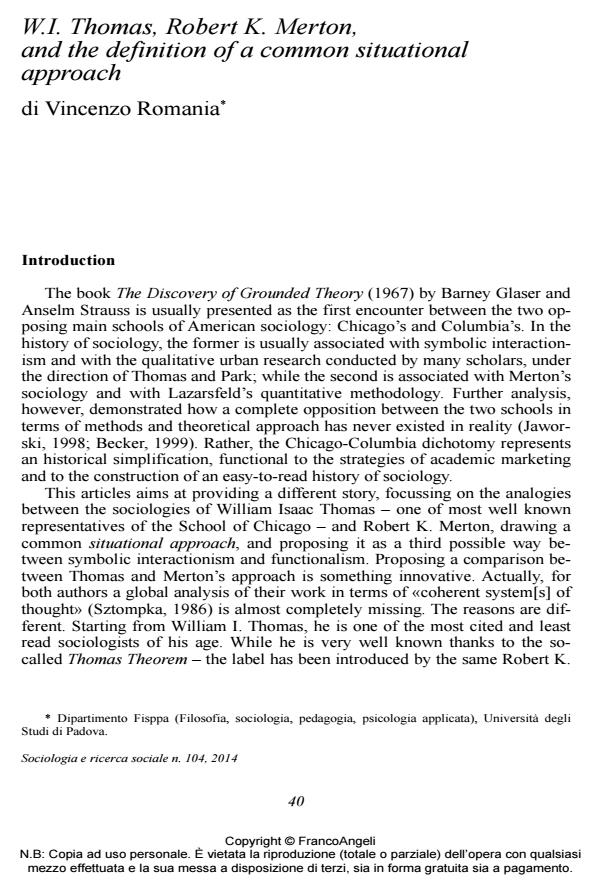W.I. Thomas, Robert K. Merton, and the definition of a common situational approach
Titolo Rivista SOCIOLOGIA E RICERCA SOCIALE
Autori/Curatori Vincenzo Romania
Anno di pubblicazione 2014 Fascicolo 2014/104
Lingua Italiano Numero pagine 19 P. 40-58 Dimensione file 91 KB
DOI 10.3280/SR2014-104002
Il DOI è il codice a barre della proprietà intellettuale: per saperne di più
clicca qui
Qui sotto puoi vedere in anteprima la prima pagina di questo articolo.
Se questo articolo ti interessa, lo puoi acquistare (e scaricare in formato pdf) seguendo le facili indicazioni per acquistare il download credit. Acquista Download Credits per scaricare questo Articolo in formato PDF

FrancoAngeli è membro della Publishers International Linking Association, Inc (PILA)associazione indipendente e non profit per facilitare (attraverso i servizi tecnologici implementati da CrossRef.org) l’accesso degli studiosi ai contenuti digitali nelle pubblicazioni professionali e scientifiche
This articles aims to demonstrate how it is possible to compare the sociologies of William Isaac Thomas and Robert K. Merton, defining a common situational approach. This would result in a third alternative between symbolic interactionism and functionalism, that tries to go beyond the limits of the two approaches in terms of: abstractness, scarce attention to power dynamics, implicit or explicit acceptance of status quo, weak operationalization. The author focused on the biographical and intellectual contacts between the two scholars and on analogies at an epistemological, methodological and theoretical level. Finally, the situational approach is connected with the more recent developments in sociological theory.
- Recent writings on Robert K Merton: a Listing and some Observations Charles Crothers, in The American Sociologist /2019 pp.121
DOI: 10.1007/s12108-018-9387-z
Vincenzo Romania, W.I. Thomas, Robert K. Merton, and the definition of a common situational approach in "SOCIOLOGIA E RICERCA SOCIALE " 104/2014, pp 40-58, DOI: 10.3280/SR2014-104002